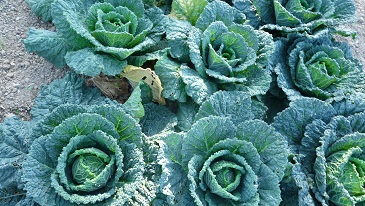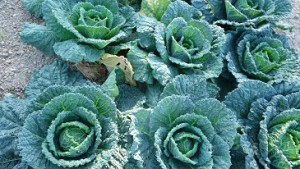
Self-sufficiency as a retirement strategy is a series of articles by Self-sufficiency guru Nev Sweeney Most retirement strategies focus on “wealth creation”. The aim is to provide you with enough cash to maintain your extravagant pre-retirement lifestyle. Not necessarily a bad thing in itself, but there is a better way – using self sufficiency as a retirement strategy! In this second part of this series we look at food as part of self-sufficiency in retirement.
Food – Veggies
 This is one of those unavoidable expenses, we all have to eat! But growing your own veggies is not just about saving money……..it is about taste, convenience, nutrients and reducing your environmental footprint. Your veggie garden can be as big or as small as you want, or are able to cope with and two tomato plants in containers on a balcony are better than nothing! There are many ways of growing your own produce and perhaps the simplest is digging up part of your lawn and planting seeds or seedlings. If your soil is not what it could be, you can make raised beds by importing organic materials such as manure, straw, hay, compost etc and or good soil and then digging it into your garden, some edging material to build up the bed and there you have it. Raised beds are a bit easier to wok with and veggies love the rich loose soil, so draining is not a problem. You may have difficulty with digging or poor soil so another easy way is to plant a no dig garden. This is based on making up a bed with compostables such as Lucerne hay and straw and chook poo (well rotted) and then planting your seeds or seedlings direct into it – as the bed rots down, lots of nutrients are released. My main argument against this is that all of the components have to be bought it, but if your soil is poor etc. it could be worthwhile. Maybe you don’t have the space for a large veggie patch – so how about containers? They are easy to move around and a surprising number of veggies grow well in containers. A container garden can also be very attractive is you get a bit creative with your containers, drainage is assured and you can take advantage of companion planting. They do need the water keeping up to them on hot days and, again, everything need to be bought in although recycling things into veggie growing containers is good for the environment too! To get the maximum out of a small space, there is always hydroponics – growing your veggies in a water solution of tailored nutrient. These can be simple or complicated, such as the set ups used to grow certain “recreational” drugs. I have experimented with organic hydroponics but without much success to date, so unless you have better luck than me it means using chemicals. There are books around that tell you how to make up your own formulae, but most people seem to buy them from hydroponic suppliers. For a small area, if you have the interest, hydroponics may work for you For my money, whatever way you choose to grow, organic gardening (fertilizer and pesticide free) makes the most sense. Not just because it is the most environmentally friendly and gives you residue free food but because if you are going towards self sufficiency you don’t want to be forced into buying expensive chemicals. Some other concepts worth reading up on are permaculture, crop rotation, green manure, mulching and composting.
This is one of those unavoidable expenses, we all have to eat! But growing your own veggies is not just about saving money……..it is about taste, convenience, nutrients and reducing your environmental footprint. Your veggie garden can be as big or as small as you want, or are able to cope with and two tomato plants in containers on a balcony are better than nothing! There are many ways of growing your own produce and perhaps the simplest is digging up part of your lawn and planting seeds or seedlings. If your soil is not what it could be, you can make raised beds by importing organic materials such as manure, straw, hay, compost etc and or good soil and then digging it into your garden, some edging material to build up the bed and there you have it. Raised beds are a bit easier to wok with and veggies love the rich loose soil, so draining is not a problem. You may have difficulty with digging or poor soil so another easy way is to plant a no dig garden. This is based on making up a bed with compostables such as Lucerne hay and straw and chook poo (well rotted) and then planting your seeds or seedlings direct into it – as the bed rots down, lots of nutrients are released. My main argument against this is that all of the components have to be bought it, but if your soil is poor etc. it could be worthwhile. Maybe you don’t have the space for a large veggie patch – so how about containers? They are easy to move around and a surprising number of veggies grow well in containers. A container garden can also be very attractive is you get a bit creative with your containers, drainage is assured and you can take advantage of companion planting. They do need the water keeping up to them on hot days and, again, everything need to be bought in although recycling things into veggie growing containers is good for the environment too! To get the maximum out of a small space, there is always hydroponics – growing your veggies in a water solution of tailored nutrient. These can be simple or complicated, such as the set ups used to grow certain “recreational” drugs. I have experimented with organic hydroponics but without much success to date, so unless you have better luck than me it means using chemicals. There are books around that tell you how to make up your own formulae, but most people seem to buy them from hydroponic suppliers. For a small area, if you have the interest, hydroponics may work for you For my money, whatever way you choose to grow, organic gardening (fertilizer and pesticide free) makes the most sense. Not just because it is the most environmentally friendly and gives you residue free food but because if you are going towards self sufficiency you don’t want to be forced into buying expensive chemicals. Some other concepts worth reading up on are permaculture, crop rotation, green manure, mulching and composting.
